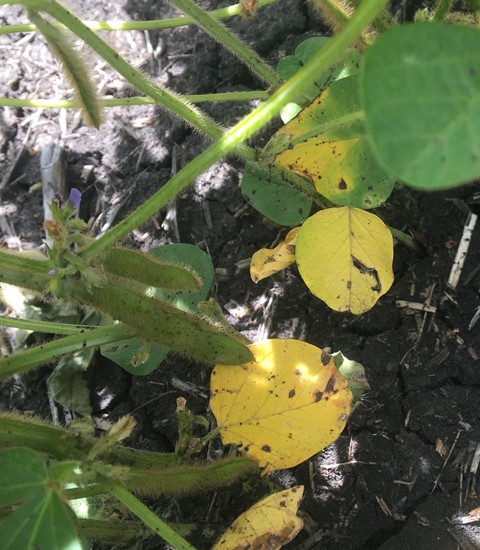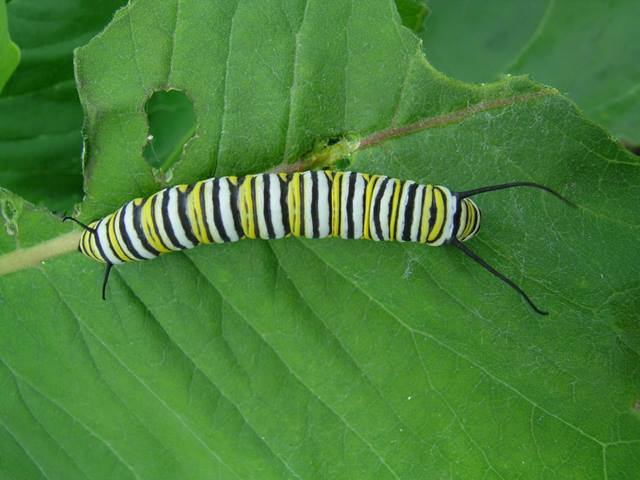Manitoba Insect & Disease Update
Issue 9: July 25, 2018
Summary
Diseases: The second case of clubroot in canola this year has been reported. Disease surveys in soybean and wheat are ongoing and disease levels are low overall.
Insects: Overall insect concerns in field crops are relatively low. There are still some areas where grasshopper levels are being watched. Spider mite levels are being monitored in some soybean fields in the Central region, but so far they are not at levels where control would be needed. No soybean aphids have been found in Manitoba yet this year. This is encouraging, as a late arrival, combined with a soybean crop that is advancing well, will decrease the risk of economic levels developing. Concerns over diamondback moth levels in the Eastern and Central region seem to have diminished, as more of the population has moved into the pupa stage. A couple of agronomists have commented that levels of European corn borer are quite low in the fields they have scouted.
Clubroot in Canola
Another case of clubroot in canola has been reported this year. Like the previous case, this field is located in an RM where clubroot symptoms have previously been observed. In this case, the field is planted to soybeans and the symptoms were observed on canola volunteers. Scouting of volunteers and alternate hosts like shepherd's purse, stinkweed, and wild mustard are important for detection of this disease. The affected grower is looking at management practices including a lengthened rotation and using clubroot-resistant varieties across the farm.
Disease Surveys
The early season disease survey for soybeans and the Fusarium head blight (FHB) surveys in winter and spring wheat are nearing completion.
In soybeans, bacterial blight and septoria brown spot have been observed, but not at levels causing concern for economic damage. Bacterial blight is more evident in the mid- and upper canopy and septoria brown spot has been observed on the lower leaves (Figure 1). Phytophthora root rot has also been observed in multiple fields across the province and is not limited to certain regions.
Fusarium head blight levels in surveyed winter wheat fields have been very low across the province. The symptoms of FHB are more evident in spring wheat fields, but on average expected to be below the levels where yield or quality are affected.


Figure 1. Bacterial blight (left) and septoria brown spot (right) symptoms in soybean
Insect Monitoring Programs
Bertha Armyworm: Out of ninety-nine traps, 87 currently have cumulative counts in the low risk category (less than 300), one trap is in the moderate risk range, and 11 traps are in the uncertain risk category. Most of the highest cumulative counts so far are in the western part of Manitoba. Traps counts in eastern Manitoba and the Interlake have generally been quite low.
Table 1. Highest cumulative trap counts for bertha armyworm adults over the trapping period June 3 to July 24, 2018.
0-300=low risk 300-900=uncertain risk 900-1,200=moderate risk 1,200+=high risk
| Location | Region | Count | Risk |
|---|---|---|---|
| Tilston | Southwest | 970 | Moderate |
| Somerset | Central | 490 | Uncertain |
| Pierson | Southwest | 469 | Uncertain |
| Swan River | Northwest | 414 | Uncertain |
| Bowsman | Northwest | 404 | Uncertain |
| Inglis | Northwest | 402 | Uncertain |
| Mather | Central | 358 | Uncertain |
| Russell | Northwest | 344 | Uncertain |
| Benito | Northwest | 343 | Uncertain |
| Kenville | Northwest | 342 | Uncertain |
| Inglis | Northwest | 342 | Uncertain |
| Benito | Northwest | 307 | Uncertain |
This trapping provides information on the regional risk of bertha armyworm potentially getting to higher levels of larvae. The trap counts have little relevance for the field the trap is in, but assessing the traps captures from the various traps in a region can indicate the risk and importance of sampling levels of larvae in a region. At no point should a management decision be made based on trap counts. Such decisions need to be made based on levels of larvae.
While scouting canola, assessing levels of bertha armyworm larvae is encouraged, particularly in the western part of Manitoba where a few traps have reached the uncertain and moderate risk range.
A reminder for those monitoring traps that this is the last week for trap counts. Once counts are done for this week (July 23 to 27) the traps can be pulled.
Insect Identification Quiz
Our theme for this weeks insect identification quiz is yellow, black and white caterpillars. The photo on the left is a caterpillar some are noticing a few of (low levels) in canola. What is it?
The photo on the right is a caterpillar found on milkweed. What is this caterpillar?


Answer: The caterpillar in the photo on the left is zebra caterpillar (Melanchra picta). They have a broad host range. In past years I have seen or had reports of them on canola, sunflowers, flax, alfalfa and soybeans, although generally at low levels. Some other listed host plants include clover, peas, cabbage, carrots and dandelions. The early stages of the larvae can be gregarious on plants. So often there are patches where is seems like there is a lot of defoliation, but over a whole field it may not be as bad as it seems when you see one of these patches of feeding.


Answer: The caterpillar in the photo on the left is zebra caterpillar (Melanchra picta). They have a broad host range. In past years I have seen or had reports of them on canola, sunflowers, flax, alfalfa and soybeans, although generally at low levels. Some other listed host plants include clover, peas, cabbage, carrots and dandelions. The early stages of the larvae can be gregarious on plants. So often there are patches where is seems like there is a lot of defoliation, but over a whole field it may not be as bad as it seems when you see one of these patches of feeding.
The caterpillar on the milkweed is the larva of the monarch butterfly (Danaus plexippus). There are 2 generations produced in Manitoba each summer if conditions are favourable.
----------------------------------------------------------------------------------------------------------------------
Compiled by:
John Gavloski, Entomologist Holly Derksen, Field Crop Pathologist
Manitoba Agriculture Manitoba Agriculture
Phone: (204) 750-0594 Phone: (204) 750-4248
To report observations on insects or plant pathogens that may be of interest or importance to farmers and agronomists in Manitoba, please send messages to the above contacts.
To be placed on an E-mail list so you will be notified immediately when new Manitoba Insect and Disease Updates are posted, please contact John Gavloski at the address or numbers listed above.

